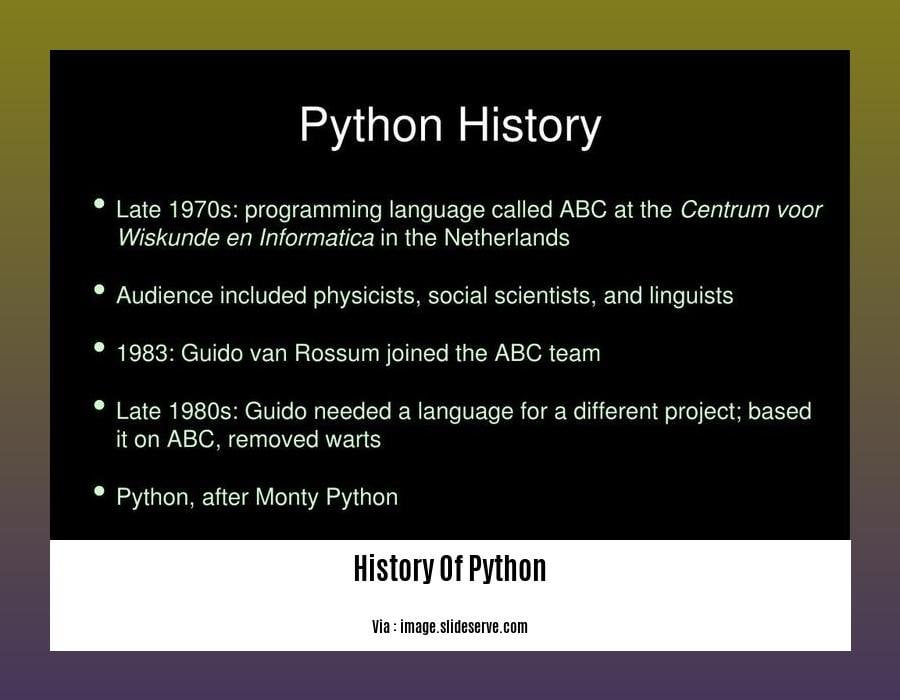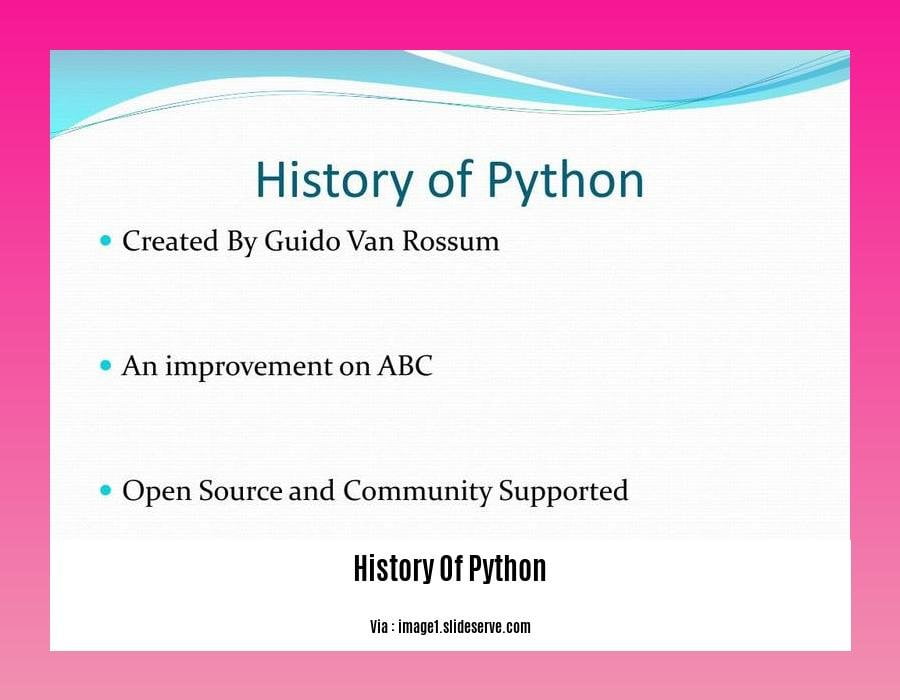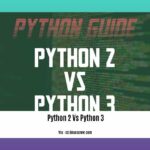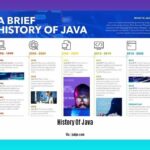Uncover the captivating tale of Python, a programming language that has revolutionized the tech sphere. From its humble beginnings as a scripting language, Python has evolved into a versatile powerhouse, driving innovation in web development, data science, and beyond. Join us on a journey through Python’s history, where we’ll explore its creators, pivotal moments, and the cultural and technological forces that have forged its remarkable evolution.
Key Takeaways:
- Created by Guido van Rossum in 1989.
- Inspired by ABC and SETL languages.
- Designed to interface with the Amoeba operating system.
- Python 1.0 released in 1991.
- Python 2.0 released in 2000.
- Python 3.0 released in 2008.
- Widely used in web development, data science, and machine learning.
History of Python


Python’s tale is a testament to the enduring power of innovation. Crafted by Guido van Rossum in 1989, Python’s roots lie in the desire for a user-friendly scripting language. Its birth was marked by the influence of ABC and SETL, languages that laid the groundwork for Python’s object-oriented and powerful nature.
Python’s journey commenced with its 1.0 release in 1991, introducing modules, exception handling, and classes to the programming landscape. As the 2000s dawned, Python 2.0 emerged, armed with the game-changing features of list comprehensions and garbage collection.
The year 2008 marked a pivotal moment in Python’s evolution with the advent of Python 3.0. Sweeping changes, including the print function and comprehensive Unicode support, transformed Python’s capabilities.
Today, Python stands as a formidable force in the programming world. Its versatility shines in web development, data science, and machine learning. The Python community, with its enthusiastic contributors and vast repository of resources, continues to drive the language’s progress.
As we delve into the annals of Python’s history, we uncover a narrative of innovation, adaptability, and unwavering community support. This remarkable journey attests to the enduring power of open-source collaboration and the transformative impact of a well-conceived and meticulously crafted programming language.
- The brainchild of Guido van Rossum’s creation, Python has become a dominant force in the tech industry.
- With its recent developments, the debate between Python 2 vs Python 3 has become more relevant than ever.
- Some have even said that it has had a profound impact on software development, revolutionizing the way we think about programming.
Early history[edit]
Python’s journey began in the late 1980s when Guido van Rossum, a Dutch programmer, set out to create a new programming language.
Inspired by the clarity of ABC and the power of SETL, Rossum sought to develop a language that was both easy to read and write, yet versatile enough for complex tasks.
In 1989, Python’s genesis occurred as a scripting language designed to interface with the Amoeba operating system. Its initial release in 1991, Python 1.0, introduced fundamental concepts such as modules, exceptions, and classes.
As the language evolved, it gained momentum in the programming community. Python 2.0, released in 2000, brought significant enhancements like list comprehensions and garbage collection.
With the launch of Python 3.0 in 2008, the language underwent a major overhaul. Key features like the print function and Unicode support were incorporated, solidifying Python’s position as a modern, adaptable programming language.
Key Takeaways:
- Python emerged in 1989 as a scripting language designed by Guido van Rossum.
- Inspired by ABC and SETL, Python aimed for code readability and versatility.
- Python 1.0 introduced modules, exceptions, and classes.
- Python 2.0 enhanced the language with list comprehensions and garbage collection.
- Python 3.0, released in 2008, featured significant updates like the print function and Unicode support.
Citation:
- “History of Python.” GeeksforGeeks.
- “A Brief History of the Python Programming Language.” InfoWorld.
FAQ
Q1: Who invented Python and when?
A1: Python was invented by Guido van Rossum in 1989.
Q2: What languages inspired the development of Python?
A2: Python was inspired by the ABC and SETL programming languages.
Q3: What was the primary purpose of Python initially?
A3: Python was initially designed to interface with the Amoeba operating system.
Q4: What were some key features introduced in Python 1.0?
A4: Modules, exceptions, and classes were introduced in Python 1.0.
Q5: What significant changes were made in Python 3.0?
A5: Python 3.0 brought major changes such as the print function and Unicode support.
- Senior at What Age: Benefits & Eligibility Guide - March 29, 2025
- Unlocking Senior Benefits: How Old is a Senior? Your Complete Guide - March 29, 2025
- Master Russian Politeness:A Guide to Saying Please - March 29, 2025
















